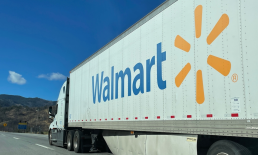Deep Dive: Can Automation Solve Grocers’ Inventory Management Challenges?
Brick-and-mortar retailers have one key advantage in the competition against eCommerce: Only they can immediately provide physical products. That advantage evaporates if consumers arrive at stores only to find the items they want are out of stock, however.
Getting inventory levels right is challenging, particularly for grocery stores that must also manage sell-by dates. Those that undersupply miss out on potential sales and risk damaging consumers’ perceptions that they can reliably meet their needs. Oversupplying forces grocers to throw away unsold produce, meats and other items, though, costing them money and contributing to the problem of food waste. Whether over- or underestimating, misjudging inventory needs is an expensive problem for grocers.
Retailers not only need to ensure they have purchased goods in the proper quantities, but they must also make certain they keep their shelves and displays full. Grocers face painful mistakes if they fail to net sales due to customers being unable to find items that are sitting in back rooms.
Thankfully, technological advancements are tackling these longstanding problems and helping supermarkets compete with online grocery services. This Deep Dive explores the automation approaches that keep proper product amounts on hand and available on shelves.
Supply Purchasing Goes From Analog To Digital
Traditional low-tech approaches to inventory can entail store managers making guesses based on past experiences, a method that is inexact and leaves opportunities for human error. Precise product management requires anticipating a variety of factors, including how demand for items might fluctuate based on seasons, promotional campaigns, price changes or even adjustments to store hours.
Grocers must also consider restrictions that impact their ability to acquire new inventory, like suppliers’ minimum or maximum order quantities and delivery time limitations.
Machine learning (ML) can assist in such processes. Researchers note that grocers can provide sales and marketing campaign history details and other data, which ML algorithms then analyze to anticipate demand.
These systems could assess risk-reward balances in grocers’ stocking level decisions, for example, projecting how much they may stand to profit if they were to stock extra units of apples that sell, compared to how much would be lost if those extra units do not sell.
Bringing AI And Robots To Shelf Monitoring
Automated stores are also bringing high-tech updates to shelf stocking. Traditional approaches involve assigning sales associates to walk the aisles and eyeball where items are running low, but deploying sensors, AI-powered cameras and robotics can more accurately pinpoint needs and enable faster responses.
Walmart is one of the latest to bring this technology to its stores. Its Intelligent Retail Lab division recently produced a system of sensors, AI-enabled cameras and other solutions that are currently being trialed at one location to assess and track meat and produce freshness, predict demand and identify when items need replenishing. The latter requires the solution to be able to distinguish between items — including those that may be similar, such as one pound of ground beef versus two pounds.
Sales associates use apps to receive real-time notifications about restocking needs or items that have passed their shelf lives.
Walmart has another solution to keep items from lingering on shelves: an app at its Sam’s Club brand that predicts consumers’ purchasing needs. It uses ML to generate suggested shopping lists, and additional in-the-works capabilities will leverage beacon technology to guide users on optimized shopping routes throughout the store.
Other retailers have embraced robots to monitor product shortages. Grocery store operator Retail Business Service announced this year that it will deploy nearly 500 robots at its Giant/Martin’s and Stop & Shop brands to monitor item levels and check for in-aisle spills. The move follows earlier technology pilots, as Schnuck Market similarly trialed robots in 2017 to check placement, price and supply of goods at three locations. It launched a partnership in 2018 to deploy the solution at 15 of its 118 stores.
Sensor-and-camera systems, robotics and ML solutions are still in their early stages of assisting grocers in avoiding empty shelves. As brick-and-mortar retailers increasingly explore automation solutions, and as these solutions mature, physical supermarkets may find themselves better able to withstand the competition of online grocery.




